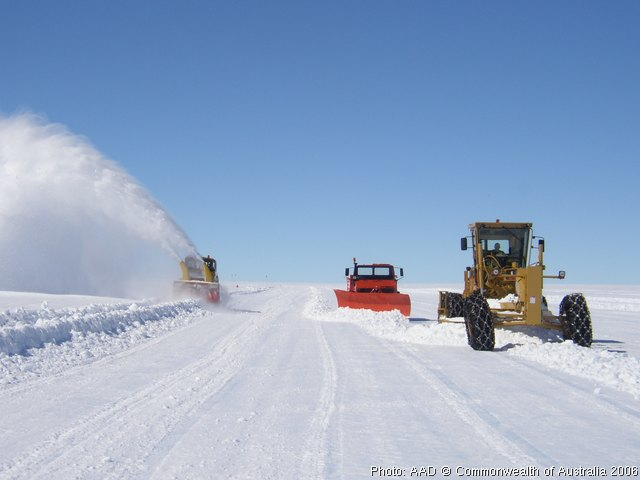Emergency airlift from Antarctica bases as Ross Ice Shelf breaks up
By MICHAEL FIELD
26 February 2011 (Stuff) – An Antarctic ice shelf used as a runway is breaking away, forcing an emergency airlift to close summer operations on the continent. The situation is being complicated by the Christchurch quake which is limiting operations at Christchurch Airport. Staff at New Zealand’s Scott Base and the US’s McMurdo Sound are scrambling to get people off Antarctica to Auckland. With winter closing in, the prospect is that people either get out now or stay all winter. CEO Lou Sanson told Radio New Zealand two giant US Air Force Globemasters are heading down tonight from Christchurch and will bring back several hundred Americans tomorrow. They will be flown on to Auckland by the RNZAF. But Sanson said they have a complication now that the Ross Ice Shelf is separating quickly from Ross Island where Scott Base and McMurdo are. “We are seeing the biggest ever break out of the Ross Ice Shelf in 15 years, our supply lines to the airfield are getting affected.” Scott Base manager Troy Beaumont told Stuff this afternoon that the sea was opening up and access to the iceshelf was becoming difficult. “The ice is breaking up,” he said. He said it was likely the Globemasters would be able to land at this point, but it would take staff longer to get onto the ice. Scott Base is already in its winter operations, with only one New Zealander due out, but there are several hundred Americans needing to get out.
Emergency airlift at McMurdo in strife 
By Jarrod Booker
22 February 2011 New Zealand’s Antarctic base is getting closer to becoming prime waterfront property as conditions in the Southern Ocean change. The breaking up of sea ice in McMurdo Sound means the sea is now within a kilometre of Scott Base, providing easier shipping access. At nearby McMurdo Station, the seafront is ice-free. “The last time we saw open sea in front of Scott Base was 1998,” Antarctica New Zealand chief executive Lou Sanson said. “In the ensuing time, we have had these massive icebergs break off the Ross ice shelf that led to these unusual sea ice conditions in McMurdo Sound, and some of the ‘bergs were the ‘bergs that floated up the coast of Dunedin.” The icebergs, some of which were half the size of Stewart Island, blocked the entrance to McMurdo Sound and led to “massive multi-year sea ice”, some of which took ships 160km of icebreaking to get through. “The United States and New Zealand are both delighted to see the extent of the sea ice breakout this year because it does mean that we are dealing with much cleaner ice, much shallower ice in terms of ice-breaking channels, and new sea ice that freezes for the runways,” Mr Sanson said. …
Welcome to McMurdo Station-sur-Mer 
By Pau; Cleary, The Australian
February 28, 2011 AUSTRALIA’S $46 million airfield in the Antarctic, which was opened just three years ago, may have become a short-lived victim of climate change, as unusually warm weather this summer has prevented flights landing there. So far this summer, only one Airbus A319 flight has landed on Wilkins runway, 70km southeast of Casey station, compared with 29 over the last two summers. The first flight managed to leave Hobart only last Thursday. Wilkins runway began operating in January 2008 when then environment minister Peter Garrett joined the first official flight. The airfield was designed to overcome the long sea voyage for personnel working at Casey station. But this year’s experience has raised doubts about the long-term viability of the airstrip. Instead of landing at Wilkins, Australian Antarctic Division staff have landed at the US base, McMurdo, and then been ferried by smaller aircraft to Casey. A spokeswoman for the division said the combination of warmer temperatures and increased UV strength was affecting the runway. Even flights to the US base have been limited to the colder part of the day, she said. McMurdo base is located at 72 degrees latitude, compared with 67 for Casey station. “Being that much further south is advantageous in these warmer-than-usual times,” the spokeswoman said. …

um, is this a huge deal, or am I just hyperventilating?
Seems like a pretty big deal to me, but we've known for quite awhile that the Ross Ice Shelf is going away.
IF it breaks off, this would raise the ocean levels by 16 feet worldwide